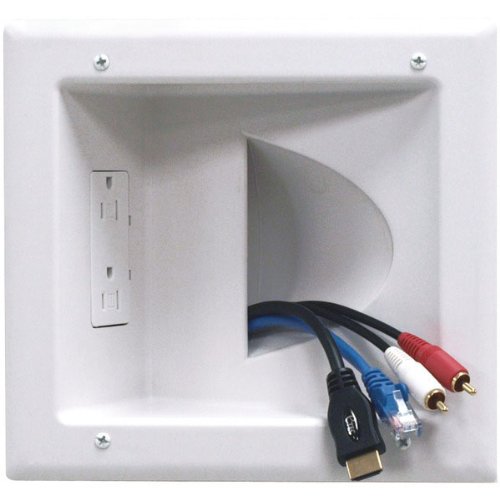Use external speakers. 2.4G wireless speakers are nice because you do
not need to clutter up the room with unnecessary cables.Build speaker
cloth into the frame to allow the sound to escape. This allows you to
use the built-in speakers without having to worry about cluttering up
your room with speakers and cables.Use a TV with speakers that do
not face forward. Instead, use a TV where the speakers send sound out
the sides or back. This is a good solution if your frame will only be
covering the front of the TV.
For easiest installation, you should install a recessed duplex
receptacle:

You need to plug both the TV and IR into the outlets.
Finding a contractor
Most of our customers work with an experienced professional to make sure
the installation goes smoothly. We recommend you consult one of the
following: cabinet makers, interior designers, carpenters, home
builders, general contractors, architects, framers, glass companies, and
other
contractors working in similar areas.
We have a
dealer search available to aid you in your search.
Questions?
Call us! (419) 461-0710